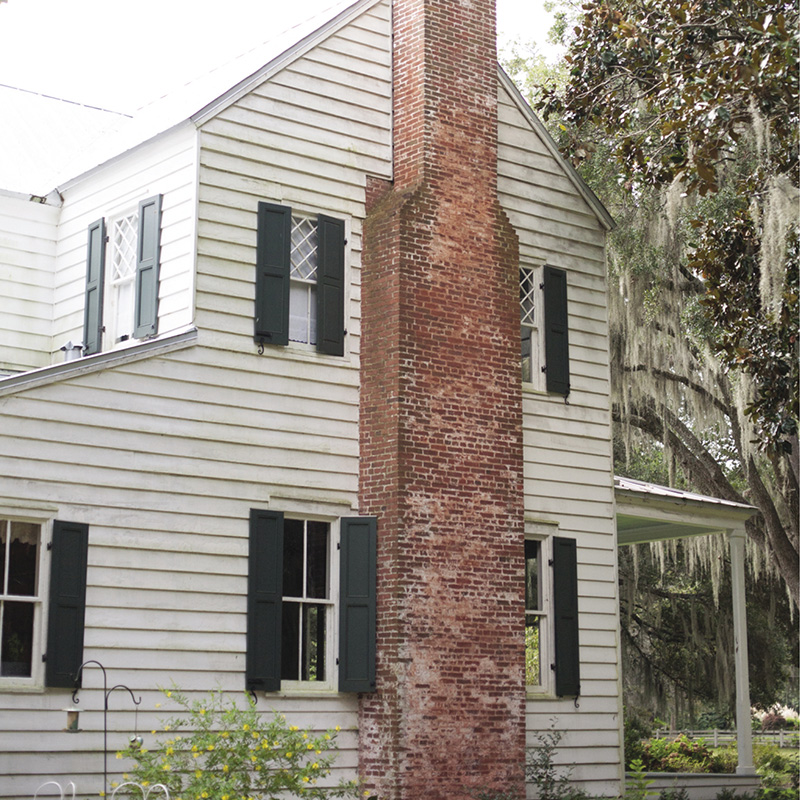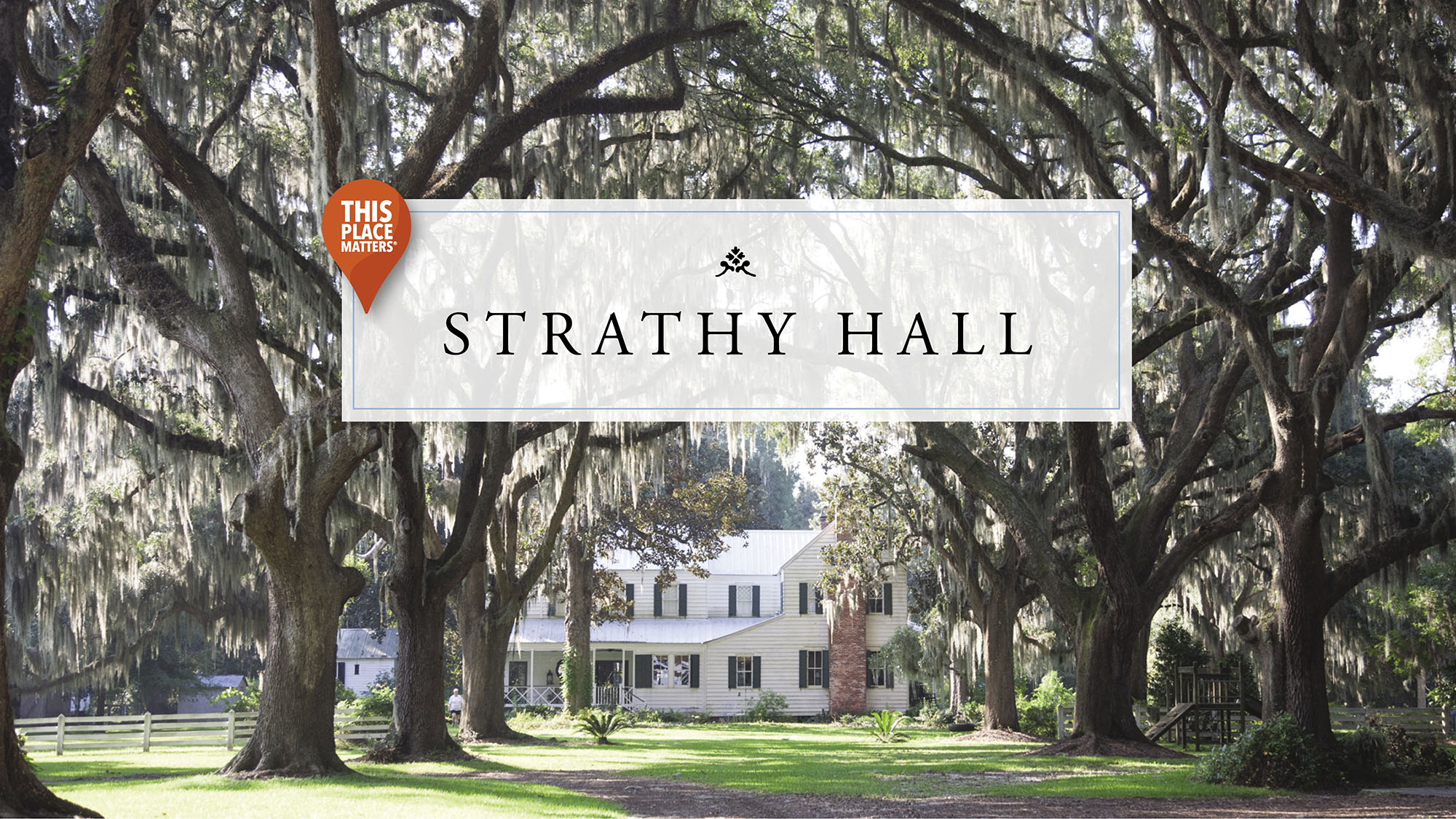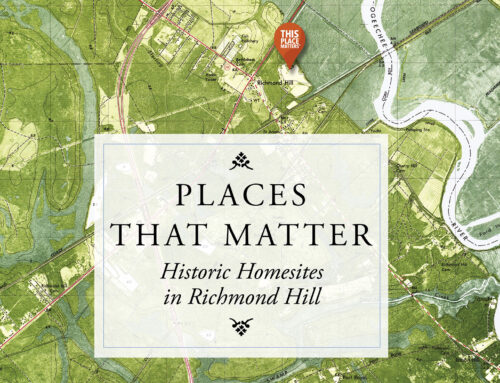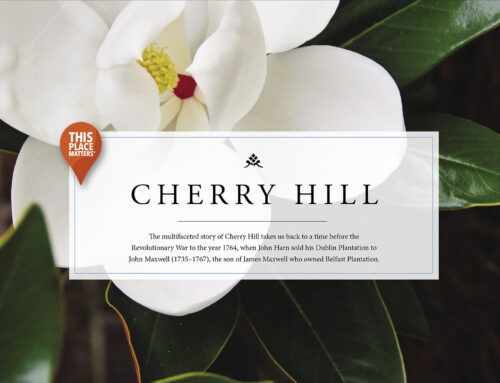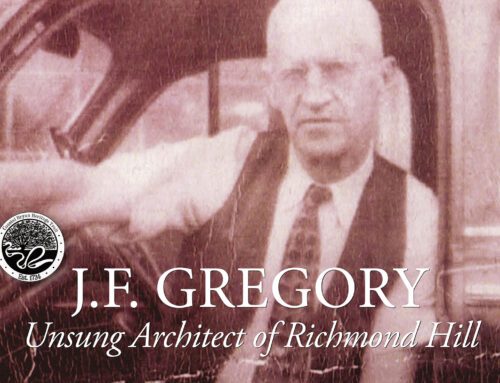Written by Kenneth Dixon (Updates by Paige Glazer) Photos by Patti Todd Photography
Once the residence of the well-known McAllister family and the seat of one of the largest rice plantations along the Georgia coast, this historic Strathy Hall estate has an elegant yet unpretentious air about it. It sits in a grove of majestic live oaks on the Ogeechee in the Strathy Hall subdivision, surrounded by grand lush crepe myrtles, boxwoods, and magnolias that date back to the 18th century. Today, home of the Appleton family, we share their love affair with the lovely white house named Strathy Hall.
The house, built circa 1838, is a classic example of the antebellum plain style – a wooden framed house of two-over-two rooms with a shed room extension across the rear facade. Probably built as a replacement for an earlier house (believed to have burnt down), the land it sits on was granted in 1756 to Captain James MacKay (1718-1785), as a land grant of 1,400 acres along the Ogeechee River. He named the land “Strathy Hall” after his ancestral estate in Scotland, Strathnaver, and developed it into a profitable rice plantation. It was MacKay who planted the ancient magnolia and live oak trees that surround the house today.
George Washington McAllister (1781-1850) purchased Strathy Hall in 1817 and built the house standing today around 1838. By 1850, McAllister had expanded his operation and become one of the wealthiest families on the Georgia coast. Joseph Longworth McAllister (1820-1864), who inherited Strathy Hall from his father, generously donated the land that would become Fort McAllister during the Civil War. The McAllisters fled to different locations in Georgia during the war, leaving the Strathy Hall house unoccupied.
The house was used as the union headquarters after the battle of Ft. McAllister. Upon their return after the war ended, they found written on one wall in the house, “Had we known that this was the house of Rosa McAllister, not a thing should have been touched.” Rosella “Rosa” McAllister Wyatt (1830-1914) was the daughter of G.W. McAllister, and had been well known in the North as a “belle” from her family’s many vacations to Newport, RI.

By the early 20th century the house had been sold to Habersham Clay, Strathy Hall had evolved into a much larger house, which featured a gambrel roof and numerous additions, including a library wing. The original shed-roof porch had been replaced with a hipped-roof one, and the nine-over-nine and six-over-six windows had been replaced by the current two-over-two and diamond pane windows. When Henry Ford bought the house in 1925, it had 11 bedrooms and a gambrel roof. He returned it back to the plain style.
June and Neill Baylor moved into the house in 1967; it had no electricity and no indoor plumbing. They rented from International Paper until 1972, when Strathy Hall and the land surrounding it became threatened by development. In an attempt to protect the house and land she had come to love, June petitioned International Paper to pull out five acres on which the house stood. With their petition granted, they purchased Strathy Hall that same year and attached the kitchen house to the rear façade. The oak avenue to the side of the house that was the commercial entrance for the rice plantation was saved, although the oak avenue that led all the way to Highway 144 was unfortunately lost. It was through their arduous efforts that Strathy Hall House was listed on the National Register of Historic Places, unfortunately the avenue of oaks remains unprotected.
When Katherine and David Slagel moved in, they set about renovating the house with a keen eye for preserving its original character and efforts of the previous owners, all while doing it in such a way that would meet their needs as a young family with children. A second-story addition was constructed on top of the Ford-era kitchen house to include a master bedroom for Katherine and David. “Our goal was for it to look authentically renovated, but we didn’t want to live in a museum and we didn’t want to affect the plain style of the house,” says Katherine. To achieve a cohesive look, they used pine siding, windows with a diamond pane upper sash and paneled shutters that matched the existing windows, bringing the total number of windows in the house to 44.
Through Katherine’s skill as an interior designer and lifelong passion for historic preservation, the Slagel’s managed to comfortably bring Strathy Hall into the 21st century before selling the property to Richard and Deanna Appleton in 2018.
In their short time living at Strathy Hall, the Appleton’s have made many discoveries and restorations on the property. To learn more about these restorations and other stories, visit RichmondHillReflections.com.
